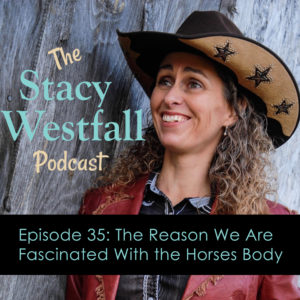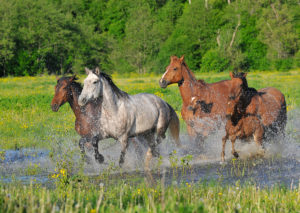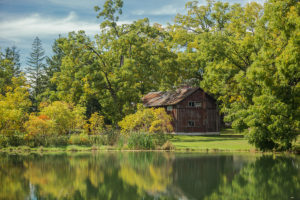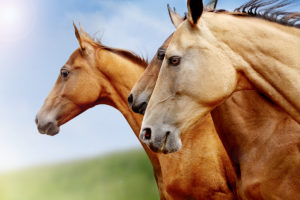Episode 35: The Reason We Are Fascinated With the Horses Body

Subscribe For Free!
Welcome to Season 4 where it’s all about the horse’s body. In this episode, I’m going to give you three tips to use when reading your horse’s body language. I also answer a listener question, and I share a new segment that’s coming up in future podcasts. If you remember from Season 1, I used the four square model to break down the concepts and divide them into the rider’s mind, the rider’s body, the horse’s mind, and the horse’s body.
The horse’s mind and body are connected, because we see what is going on in the horse’s mind by watching the horse’s body. This is why it’s so important to break things down into three steps when trying to interpret a horses body language. I break down those steps in this episode to help you better understand how your horses actions convey what is going on in your horse’s mind.
“I think there's a lot of similarities between the dynamics of people being in groups and horses being in groups.” Stacy Westfall Click To Tweet
Show Notes:
[01:42] When we discuss the horse’s body, we physically see what our horses are doing. We see their mind reflected in their body.
[02:08] Trying to separate the horse’s mind and the horse’s body is kind of like trying to separate two sides of a coin.
[02:27] When becoming a student of body language, it’s important to take a few extra steps and break things down.
[02:42] We can read a lot of different things into body language. Here are three tips to help read the horse’s body language. Number one is observe the horses actions factually. Number two is observe your actions factually. Number three is to walk away and then draw your conclusion. This is where you would figure out how to modify the behavior.

[03:23] I think there’s a lot of similarities between the dynamics of people being in groups and horses being in groups.
[03:45] Observe your horse just by reading its actions.
[05:27] Try to differentiate between the actual facts of what’s happening and the story you may have in your head.
[07:50] My mind and body is having an influence over the horse’s mind or it’s pretending not to and allowing the horses mind to do what it wants.

[09:16] If you like that your horse protects you, you are going to project that and allow that.
[09:32] To modify a horse’s behavior it first has to change in your mind, then your body, then your behavior influences the horse’s mind and the horse’s body.
[09:56] In this podcast, we are going to discuss how to influence the horse’s body as we recognize that there are a lot of different layers to this.
[10:31] Observe the big picture of the whole ride and long-term patterns. As you notice the patterns, you can break down whether something is happening in the horses mind or the horses body.

[14:11] What makes breaking down the horse’s body the most difficult of anything is the lingering question in the back of your mind is your horse lame or sore. This is where a long-term view becomes helpful.
[15:06] A lot of questions in a rider’s mind revolve around if they are riding their horse too hard or too much. Not wanting to hurt your horse comes from a good place, but it can creep into the horse’s mind when they sense your hesitation.
[15:45] A listener question about routine care for a horse’s health. I don’t always feel qualified to answer questions about a horses health, but my new sponsor, Equithrive is going to bring a new segment to the podcast called On Call where I get questions answered by different vets.
[16:56] Equithrive works really closely with veterinarians, and they’ve lined up some of the top veterinarians in the country to join me on the podcast to answer your questions about your horses help.
“Not wanting to hurt your horse comes from a good place, but it can creep into the horse's mind when they sense your hesitation.” Stacy Westfall Click To Tweet
Links and Resources:
Episode 1: Fear vs Danger: Riders can improve if they know the difference
1 Comments
Leave a Comment
SUBSCRIBE TO THE PODCAST HERE:





YOURS FREE
WHY IS MY HORSE...?




Good morning Stacy!!
Really enjoying these Podcasts and really looking forward to the upcoming section with the 4th quadrant and Equithrive!
I do have a question, and my apologies if I’m jumping ahead.
What do you suggest I do when I do see that – what I’m going to called “resource guarding” when you take your horse from the field. I do have a gelding who moves other horses around in the field but it is usually over food. When I come out to the gate, he will push the others away from the gate, possibly pin his ears, possibly bite the other horses. I don’t see it as protecting me, I have always thought it was resource guarding and he didn’t want anyone else to get to me = food or change of scenery.
I’ve never thought of it as an issue because when I observe from far away (round bale in the field and he doesn’t know I’m there) he is still moving horses if he wants the spot they are in.
Should this be a behaviour I work on? Should I be stopping it when it’s happening near me? I’ve never even thought about it until this podcast because it was just something I had observed him doing in the field and was part of that herds dynamics.
Thank you in advance!!
Jenny